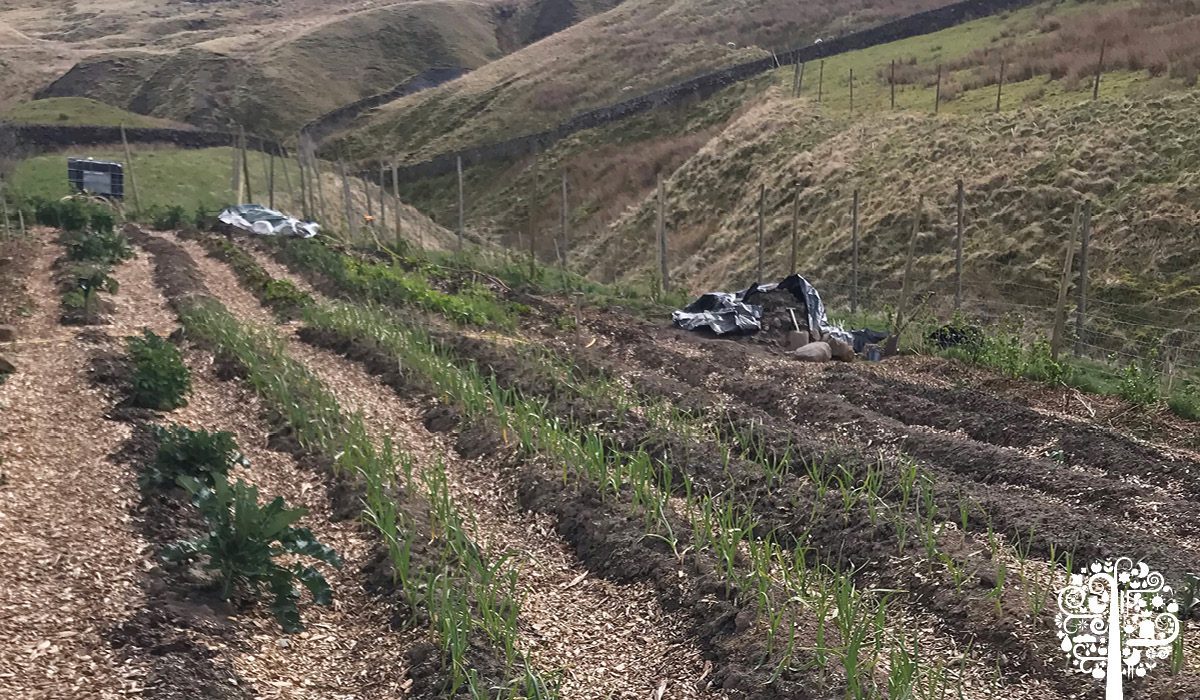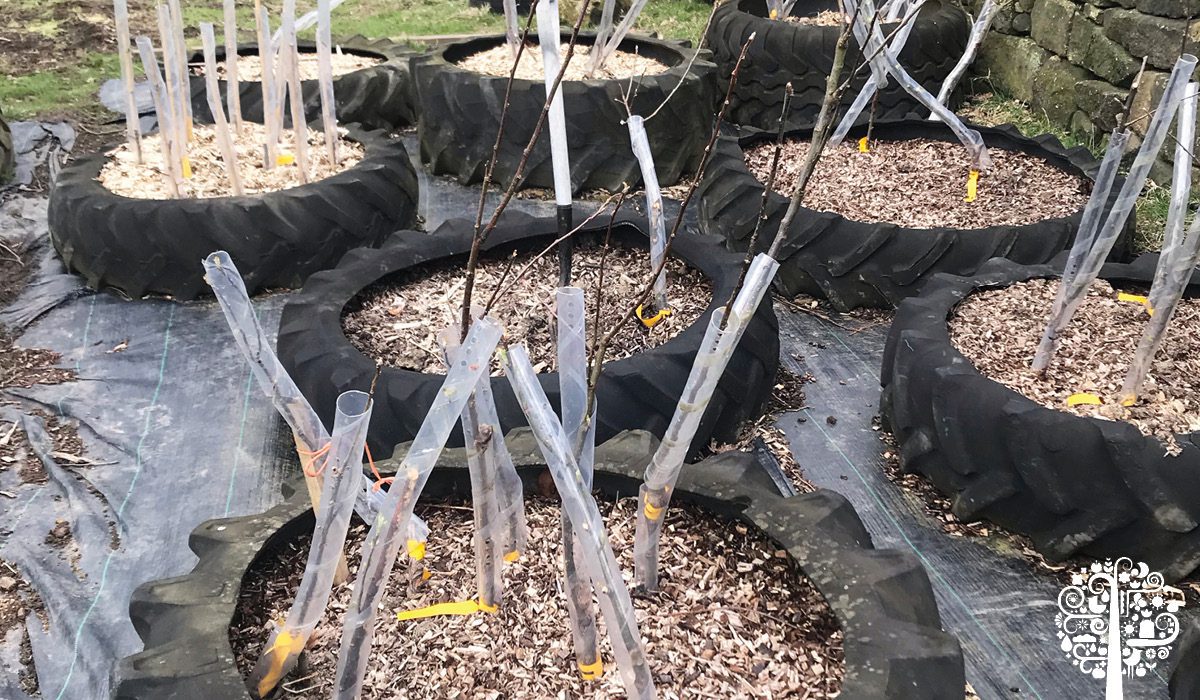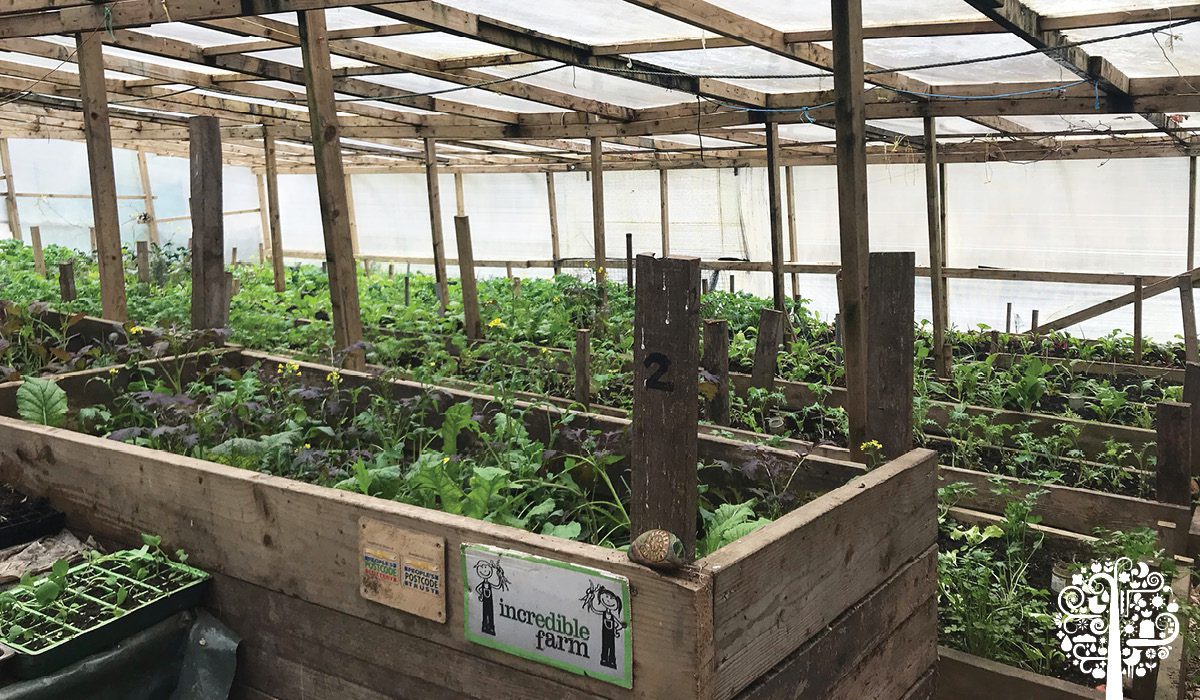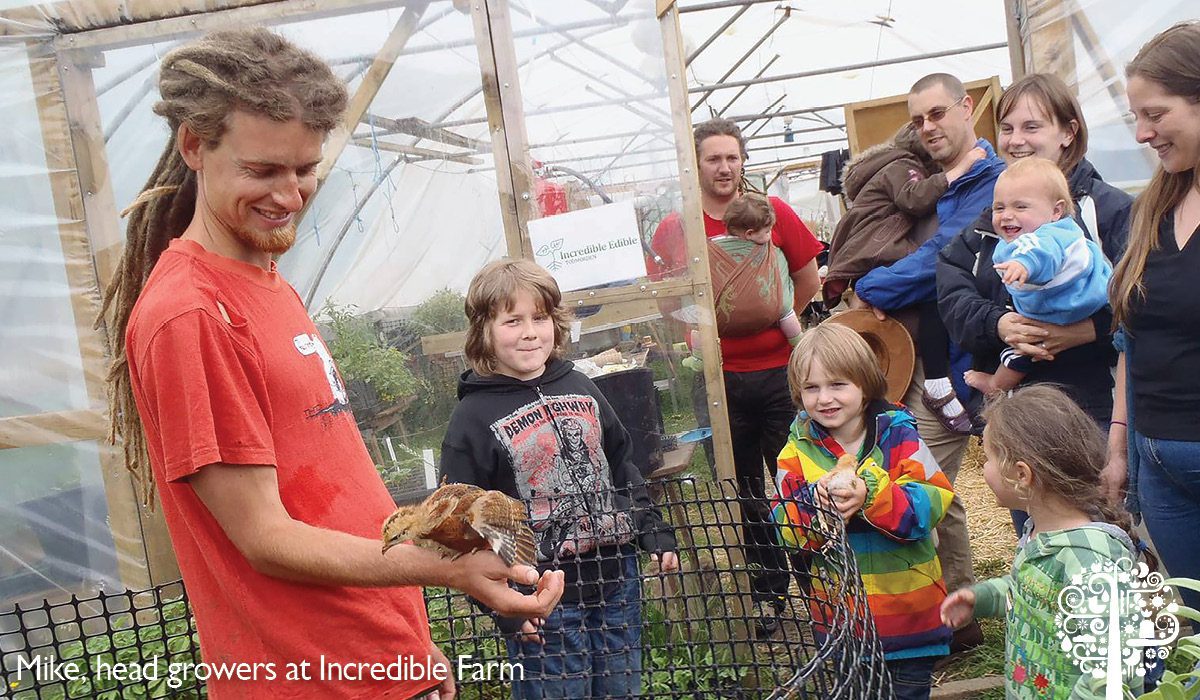It’s a dry spring day at Incredible Farm, a mixed 5-hectare smallholding tucked away in the West Yorkshire hills. The landscape is mostly clay soil and tough grasses, a lumpy, hummocky land that feels exposed. Sheep graze on the hillside – it’s what this property is mostly used for. Few people are brave enough to establish growing sites, but I find myself looking at tractor tire nursery beds of grafted apple trees, outbuildings, cows, chickens and plenty of covered growing space.

“We had pigs on this piece of land last year, to break it up a bit,” says Mike, head grower and educator at Incredible Farm. We’re standing in a fenced-off veg patch with rows of overwintered brassicas, fruit trees and strawberries. “This will be our first full season of outdoor production in this space.”
Establishing Roots
It looks great, with woodchip-covered, raised drills running through what would otherwise be a piece of forbidding-looking land. There’s an old dry stone wall providing shelter and warmth for the fruit production, and he’s expecting good yields this season from the space.

We walk downhill a piece to their covered growing space, a large polycarbonate and timber-framed structure with rows of cow manure and compost-filled raised beds brimming with salad greens. Nitrogen-rich chicken droppings also get collected and added to the mix, along with some seaweed fertilizer. They also make all their composts and raise their plants from seed. It’s quite a few degrees warmer within the structure as I sit among lush salad greens and rows of newly grown plants, drinking fresh-picked mint leaf tea with Mike and Nick.
“I still feel like we’re putting our roots down here, and it feels like early days for me”, Mike says when I ask about the potential of the site, entering their fourth season of production.
“Some things are challenging,” says Nick, the farm manager who conceived Incredible Farm. “For example, because of the hilly land, we can’t grow hay to feed the cattle in winter, so we have to buy in feed, and that’s not ideal.”

Despite this, Nick sees the project as an evolution, part learn-as-we-go, part plan – the development of the site is a series of complex connections between animals, people, plants and the natural landscape. He’s confident that the cows’ role will become more apparent as time progresses. They had three years to study the site to understand where the microclimates were before building any structures, thus using the most favorable, sheltered spots for growing spaces in the often harsh, wet and windy climate.
The Big Boom
The benefit to their system due to COVID-19 is also apparent. Demand for veg snowballed last season, and due to that instant boom, they were able to stretch their growing capabilities, selling almost everything they produced. As a result, they expanded their food growing operation and are sowing with confidence this season, knowing that it will be as likely that everything they grow will sell. All they needed was to tap into the rapid growth by supplying local home delivery companies.
“This space turned over £7k worth of produce last season,” says Nick, gesturing to the 140 square meters of covered growing space we’re sitting in. That demand currently shows little sign of easing, helping them continue with their vision for an integrated, local farm.
Encouraging Biodiversity and the Human Factor
They welcome wildlife at the farm; birds fly in and out of the greenhouse, and frogs and newts from a nearby millpond interact with the vegetable garden. They make ‘dead hedges’ with tree prunings, encouraging ground-nesting birds such as moorhens and smaller mammals and invertebrates to live there.

I ask about the people, as often we can overlook the importance and effect of the human factor within the regenerative model.
“We’re trying to work with as many people as possible”, says Mike. “So we’ve got the home education group, we’re working with schools, we have long-term volunteers, and we’ve run apprentice courses.”

As they have an open, evolving system, each group feeds into and informs the farm’s development. Besides teaching, they are open to learning from the children, volunteers and the apprentices, as they see the value each person has to contribute to the whole. Everyone has some knowledge to share.
The Lost Generation
Nick talks about the “lost generation” and how much patience it takes to help people without the skill to hold a shovel, for example. People who go to the farm on courses or volunteer slowly become part of the place, picking up skills as they go and even taking what they have learned elsewhere. It’s not for everyone, but they have had dedicated volunteers who have set up their own projects upon leaving Incredible Farm. In what is a reciprocal relationship, the volunteers learn how the system works to replicate it in some way elsewhere, and the farm has a dedicated worker for a season.
A Model for the Future
Diversification is an essential aspect of any modern farm, and Incredible Farm appears to be adapting well. Sitting on rough, hilly, wetland with heavy clay soil, they create something extraordinary through their dedication to making an alternative that works sustainably. They aim to work with and learn from the landscape, include and create habitat for wildlife and farm animals and educate themselves and others through the day-to-day running of this inspiring project. Despite it still being in its formative years, the seeds of this project have already spread and even taken root, both within the community and even across Europe, making this little project a vital resource for the future of adaptive, regenerative farming.